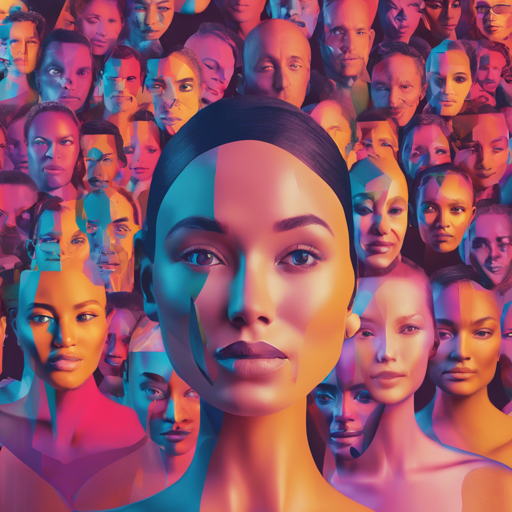The world of image generation is witnessing an exciting breakthrough with the introduction of **Collaborative Diffusion**, a cutting-edge framework designed for multi-modal face generation and editing. This user-friendly guide will take you through the steps to install, set up, and use Collaborative Diffusion, while also providing helpful troubleshooting tips along the way.
1. Overview of Collaborative Diffusion
Imagine you are an artist with a sophisticated toolkit. Each tool represents a different way to create or modify a portrait—like a brush for painting, a chisel for sculpting, or a digital pen for editing images. Similarly, Collaborative Diffusion allows users to blend various modalities (text, masks, etc.) to generate or edit facial images based on their preferences, providing high-quality results through an intuitive interface.
2. Installation Steps
Step 1: Clone the Repository
Begin by cloning the GitHub repository:
git clone https://github.com/ziqihuangg/Collaborative-Diffusion
cd Collaborative-Diffusion
Step 2: Create and Activate Conda Environment
If you don’t already have an environment, you can create one. If you have the ldm environment set up, skip to Step 3.
conda env create -f environment.yaml
conda activate codiff
Step 3: Install Dependencies
Now, let’s install the essential dependencies:
pip install transformers==4.19.2 scann kornia==0.6.4 torchmetrics==0.6.0
conda install -c anaconda git
pip install git+https://github.com/arogozhnikoveinops.git
3. Downloading Required Assets
Checkpoints
Download the pretrained models from Google Drive or OneDrive.
Datasets
If you intend to reproduce the training, download the preprocessed training data from here.
4. Generating Faces
With everything set up, you can now generate faces using various methods:
- Multi-Modal-Driven Generation: Use a combination of text and masks to generate faces.
python generate.py --mask_path test_data512_masks27007.png --input_text "This man has a beard of medium length. He is in his thirties."
python text2image.py --input_text "This woman is in her forties."
python mask2image.py --mask_path test_data512_masks29980.png
5. Editing Faces
For editing, you can collaborate multiple uni-modal edits using the following commands:
- Text-Based Editing:
python editing/imagic_edit_text.py
python editing/imagic_edit_mask.py
python editing/collaborative_edit.py
Troubleshooting Tips
If you encounter issues during the installation or generation processes, consider the following suggestions:
- Check that all dependencies are installed correctly and are compatible with each other.
- Verify that the correct paths for files and checkpoints are being used.
- If you’re running into memory issues, try reducing the batch size and the number of steps.
For more insights, updates, or to collaborate on AI development projects, stay connected with fxis.ai.
Conclusion
At fxis.ai, we believe that such advancements are crucial for the future of AI, as they enable more comprehensive and effective solutions. Our team is continually exploring new methodologies to push the envelope in artificial intelligence, ensuring that our clients benefit from the latest technological innovations.

